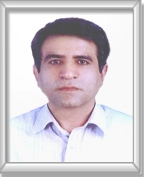Scientific Program
Keynote Session:
Title: Explosion of collapsed supernova and hot big bang of the universe driven by magnetic monopoles
Biography:
Abstract:
Title: Defect - induced magnetism in oxide nanomaterials
Biography:
Abstract:
Nano-sized materials are generally characterized by specific features being different from the bulk forms. One of them is weak ferromagnetism or superparamagnetism. This may probably be occurred due to specific surface effects which contribute to the properties of the nanomaterials. Most oxide nanoparticles behave as ferromagnetic materials at room temperature.
This phenomenon is an unusual property for non-magnetic oxides. The non-magnetic compounds commonly exhibit paramagneti cordiamagnetic behavior, but not ferromagnetic one. According to several studies, this magnetism may generally originate from magnetic moments of oxygen vacancies (crystalline point defects) at the surface of the nanoparticles, substitutional defects or dangling bonds. This work is to elucidate the magnetism due to defects in oxide nanomaterials, namely, nano-semiconducting oxides, reduced graphene oxides and nanosized superconductors for both p- dan n-type cuprate systems.
Oral Session 1:
- Applied Physics and Mathematics | Astrophysics | Atomic, molecular, and optical physics | Thermodynamics and Statistical Physics

Thirupathaiah Kola
Research fellow, RFIC Research Laboratory, Department of Electronics and Communication Engineering, Indian Institute of Technology Roorkee, India.Title: Nanoplasmonic multi band/multi functional devices using MIM waveguide
Biography:
Abstract:
Title: Data-driven extraction and classification of convectively coupled equatorial waves
Biography:
Abstract:
Title: Experimental observation of the residual strong nuclear interaction via renormalization of the elementary excitations energy of solids which are differ by one neutron from each other
Biography:
Abstract:
Title: A Comprehensive Model for Feature extraction of Proteomic Data as a Tool for more Accurate In-Silico Identification of Proteins
Biography:
Abstract:

Ranjib Banerjee
Assistant Professor in Mathematics, School of Engineering & Technology, BML Munjal University, India.Title: Enhancing synchrony by induced heterogeneity
Biography:
Abstract:
Title: The physical metric in general relativity, size of black holes and neutron stars and the existence of dark matter
Biography:
Abstract:

S. Arungalai Vendan
Associate Professor, Industrial Automation and Instrumentation Division, School of Electrical Engineering, VIT University, India.Title: Physics of welding for 21st century materials
Biography:
Abstract:
Title: Mathematical modeling of fishing bioeconomic model including wind speed effects
Biography:
Abstract:
Keynote Session:
Title: Compactness and nuclearity of psedifferential operators on lp(s1) and Lp(z), p greater than or equal to 1
Biography:
Mohammad Bagher Ghaemi belongs to Department of Mathematics, Iran University of Science and Technology, Iran. He completed his undergraduate course in Ferdowsi University of Mashhad from October 1983 to July 1987, graduating B.Sc. in Mathematics and Mathematical Education (first class). He completed his Master’s Course in Ferdowsi University of Mashhad from October 1987 to July 1990, graduating Ms.C. in Mathematics (first class). He did his Ms.C. thesis on "Automatic Continuity of Generalized Intertwining Operators". He pursued his Ph.D. Course in Glasgow University (UK) from March from March 1996 to October 2000, graduating Ph.D. in functional Analysis. He did his Ph.D. Thesis on "Spectral Theory of Linear Operators".
Abstract:
Title: Salvation Theory as per the GOD's wish
Biography:
Abstract:
Title: Another approach to evolution of the universe
Biography:
Abstract:
Oral Session 1:
- Condensed Matter Physics | Nuclear and Particle Physics | Quantum Physics | Computational Mathematics and Scientific Computing

Obiyemi Anthony Demilade
Obiyemi Anthony Demilade, Statistic Department, Osun State Polytechnic, Nigeria.Title: Cointegration analysis of multivariate time series model for inflation movement in nigeria
Biography:
Obiyemi Anthony Demilade has been working in Statistics department at Osun State Polytechnic, Nigeria. He carried out his research on co-integration analysis of multivariate time series model for inflation movement in Nigeria.
Abstract:
Title: Controllability of quantum system based on perturbation using linear combination of hermitian matrix
Biography:
Kumar Gautam is Founder & CEO of Quantum Research And Centre of Excellence (QRACE) and has experienced as Associate Professor with a demonstrated history of working in the higher education industry. Skilled in Matlab, Quantum computation, Python, Algorithms, and Research. QRACE is an independent incubation centre with a decentralized community of researchers and scientists with noble ideas and global mindsets on a common path to change the way of societal applications. Strong education professional with a Doctor of Philosophy - Ph.D. focused on Quantum gate design based on Schrödinger Dynamics from the University of Delhi, India. He is also an Editor-in-chief of Research Journal of Quantum Computations and Physical Systems (RJQCPS) along with esteemed reviewer of Quantum information processing, Springer and has published good number of Research papers in the field of quantum computation, those paper are SCI Paper in the quantum information processing, Springer and conference paper on quantum gate design.
Abstract:
Title: Fractional IMC-PI based optimum drug scheduling for cancer chemotherapy
Biography:
Nikhil Pachauri is Co-Founder & Vice President of Quantum Research and Centre of Excellence (QRACE) and currently working as a lecturer in Thapar Institute of Engineering and Technology, Patiala Punjab. Skilled in Matlab, Control Theory, Python, Algorithms, and Research. Strong education professional with a Doctor of Philosophy - Ph.D. focused on Analysis simulation and control of Non-linear process from the University Of Delhi, India. He is the esteemed reviewer of ISA transaction, Elsevier and has published good number of Research papers (SCI/Scopus) in the field of Process control. He is a member of IEEE, a Lifetime member of VIBHA.
Abstract:
It is widely known fact, that drug used during chemotherapy has an adverse effect on the patient’s body due to its toxic nature. So, a proper drug scheduling is required in order to minimize the toxic effect of chemotherapeutic drugs. Therefore, in this article a fractional IMC-PI with one design parameter based closed loop control is proposed for effective drug scheduling. Fractional IMC- PI is an amalgamation of fractional calculus and classical internal model control (IMC). For comparative analysis, PID, and two degree of freedom PID control schemes are also implemented. The Owl Search Algorithm (OSA) is used to evaluate the optimum value of design parameter of proposed controller. It is revealed from the simulation results that the FOIMC-PI controller delivers an uninterrupted and specific amount of chemotherapy drug dose into the patient body. Further, it is concluded that proposed controller is more robust towards parametric uncertainty in comparison to other controller.
Title: Vector-Valued Spectral Analysis of Complex Flows
Biography:
Joanna has a comprehensive multidisciplinary background, including a Masters degree in Physics with a focus on theoretical astrophysics and stellar pulsations, a PhD in Computational Fluid Dynamics for geophysical flows, and postdoctoral research training in Applied Mathematics. Joanna is a postdoctoral associate working on a range of topics, from theoretical development of data-driven methods for dynamical systems, to their subsequent application to various fields of physics. In particular, the current focus of her work is on machine learning techniques for analysis of spatiotemporal patterns of ultrafast spectroscopical data, complex turbulent flows, and more to come.
Abstract:
We apply a recently developed framework for spatiotemporal pattern extraction called Vector-Valued Spectral Analysis (VSA). This approach is based on the eigendecomposition of a kernel integral operator acting on vector-valued observables (spatially extended fields) of the dynamical system generating the data, constructed by combining elements of the theory of operator-valued kernels for multitask machine learning with delay-coordinate maps of dynamical systems. A key aspect of this method is that it utilizes a kernel measure of similarity that takes into account both temporal and spatial degrees of freedom (whereas classical techniques such as EOF analysis are based on aggregate measures of similarity between “snapshots”). As a result, VSA has high skill in extracting physically meaningful patterns with intermittency in both space and time, while factoring out any symmetries present in the data. We demonstrate the efficacy of this method with applications to various cases of complex turbulent flows.







